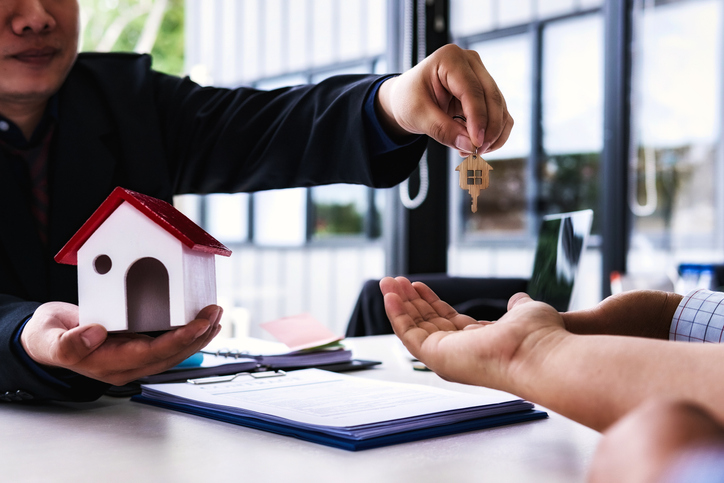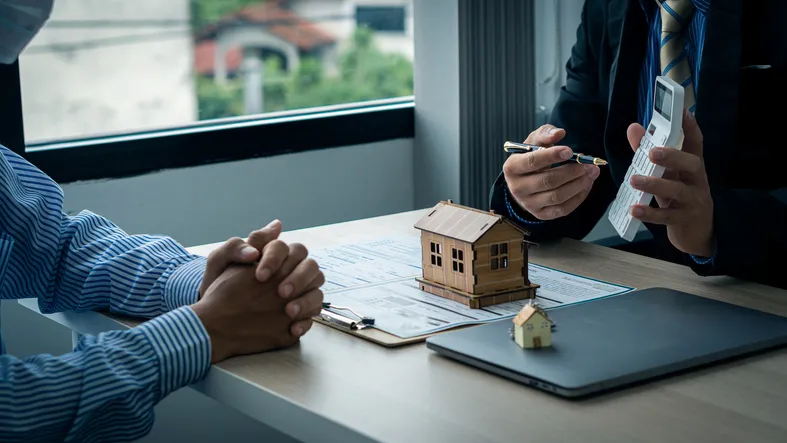Buying a home is one of the biggest financial decisions you can make. But figuring out how much income you need can feel overwhelming. A $300,000 house may sound straightforward, but the true cost depends on several factors. Your down payment, interest rate, and even where you live can impact the cost. You should know how lenders calculate affordability and what expenses to expect before making a decision. It can help you set a clear budget and move forward with confidence.
A financial advisor can help you analyze your budget and determine which housing options are right for you.
How to Calculate How Much House You Can Afford
The foundation of affordability is your household income. Lenders generally follow the “28/36 rule.” This means a max of 28% of your gross monthly income is for housing, and 36% total covers your debts. This includes your mortgage, car loans, and credit cards. If you’re eyeing a $300,000 house, this rule helps you back into the salary range you’ll likely need to qualify.
The size of your down payment can significantly change the income required. A larger down payment reduces the loan amount, which lowers both monthly mortgage payments and the long-term interest you’ll pay. For example, putting down 20% on a $300,000 house reduces your mortgage to $240,000, while a smaller 5% down payment means borrowing $285,000. That difference can raise or lower your monthly budget by hundreds of dollars.
You can’t ignore mortgage rates because they directly affect affordability. Even a one-percentage-point difference in interest rates can shift your monthly payment by a substantial amount. This means that someone who qualified comfortably at a 6% rate may find themselves stretching at 7%. Watching rates and locking in a favorable one is a key part of calculating what you can afford.
Beyond the mortgage itself, property taxes and homeowners insurance add to your monthly housing costs. These expenses vary widely by location and property type, so it’s important to research local averages. Neglecting these can leave you underestimating your true monthly payment, and its crucial to understand how much house you can afford.
How Much You Need to Buy a $300,000 House (By Down Payment)

Putting 20% down is the traditional benchmark for homebuyers. On a $300,000 house, that equals $60,000. This approach reduces your loan balance to $240,000, which lowers monthly payments and eliminates the need for private mortgage insurance (PMI). While it’s a hefty sum to save, it offers long-term savings through smaller payments and less interest over the life of the loan.
A 10% down payment equals $30,000, cutting your mortgage to $270,000. Monthly payments will be higher compared with the 20% scenario, and you’ll likely pay PMI until your equity reaches 20%. Still, for many buyers, this option strikes a balance between affordability and flexibility, allowing you to enter the housing market sooner.
At just 5% down, you’d need $15,000 upfront. Your loan would total $285,000, and PMI would be required, adding to your monthly costs. While this path makes homeownership more accessible, especially for first-time buyers, it does increase both the risk of payment strain and the long-term cost of the loan. Buyers choosing this route should be especially careful with budgeting.
Some conventional and first-time homebuyer programs allow as little as 3% down. On a $300,000 house, that’s just $9,000 upfront, leaving a mortgage of $291,000. This is the most accessible option for those with limited savings, but it comes with the highest monthly payments and ongoing PMI. It can be a stepping stone into homeownership, but it’s important to weigh the trade-offs before committing.
It’s easy to focus solely on the down payment, but buyers should also budget for closing costs, which typically run 2% to 5% of the purchase price. On a $300,000 home, that’s another $6,000 to $15,000. Having cash reserves for these expenses—and an emergency fund—ensures you’re financially prepared beyond just meeting the minimum required to buy the house.
Factors That Might Impact How Much You Need to Buy a House
When you’re planning to buy a home, the actual amount you’ll need can shift based on several factors. Understanding these variables will help you set a more realistic budget and avoid surprises during the homebuying process.
- Credit Score: Your credit score influences the interest rate you’re offered, which in turn affects your monthly payments. A higher score often means lower borrowing costs, while a weaker score can make your loan more expensive over time.
- Debt-to-Income Ratio (DTI): Lenders look at your existing debts compared with your income to assess risk. If your debt-to-income ratio is high, you may need a larger down payment or stronger income to qualify.
- Location and Property Taxes: The cost of living and property taxes vary significantly depending on where you buy. A $300,000 home in one state may come with much higher annual taxes than the same-priced home elsewhere, increasing your overall costs.
- Loan Type: The type of mortgage you choose (conventional, FHA, VA or USDA) affects how much you need upfront. Some programs allow for lower down payments but may require mortgage insurance or come with stricter qualification standards.
- Closing Costs: Buyers should plan for 2% to 5% of the purchase price in closing costs, which include fees for appraisals, title searches, and loan origination. These expenses can easily add thousands to your upfront budget.
- Homeowners Insurance and HOA Fees: Insurance premiums and, in some neighborhoods, homeowners association (HOA) dues can increase your monthly payment. Factoring these in helps you avoid stretching your budget too thin.
Ultimately, the total cost of buying a home is shaped by more than just the sticker price. By accounting for these factors in advance, you’ll be better positioned to determine how much house you can truly afford and plan your purchase with confidence.
Bottom Line

Buying a $300,000 house requires more than just looking at the listing price, it’s about understanding how income, down payment, loan terms, and other costs fit into your financial picture. From saving for a down payment to budgeting for taxes, insurance and closing costs, each factor shapes how much you’ll really need. By running the numbers carefully and considering your long-term goals, you can approach homeownership with confidence and avoid stretching your finances too thin. For personalized guidance, speaking with a financial advisor can help you align your home buying plans with your overall financial strategy.
Tips for Financial Planning
- A financial advisor can help you plan out your finances so that you’re ready for the big moments of life, such as buying a house at the right time. Finding a financial advisor doesn’t have to be hard. SmartAsset’s free tool matches you with vetted financial advisors who serve your area, and you can have a free introductory call with your advisor matches to decide which one you feel is right for you. If you’re ready to find an advisor who can help you achieve your financial goals, get started now.
- Getting ready to buy a house but what to estimate what you’ll pay? Consider using a mortgage calculator to determine what your options are other things such as how much PMI you might have to end up paying.
Photo credit: ©iStock.com/ArLawKa AungTun, ©iStock.com/Yok_Piyapong, ©iStock.com/ArLawKa AungTun
